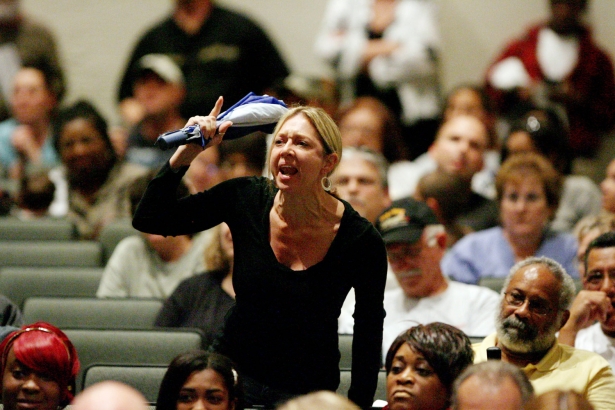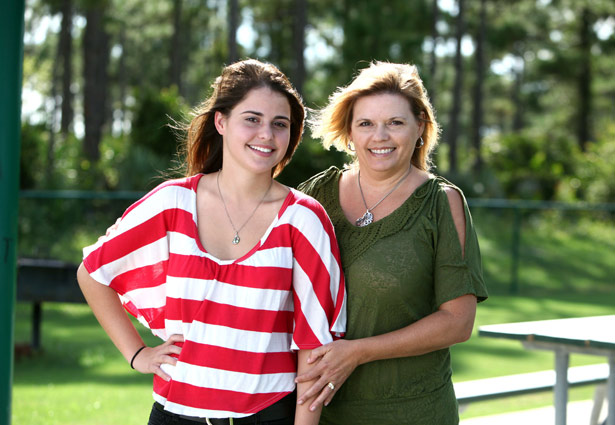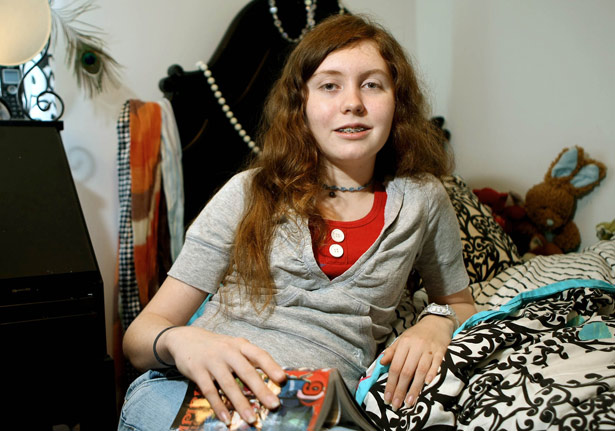
Still, it was a full six months later, when a doctor spotted her brain tumor during an eye exam - literally seeing the growth through the lens of Hannah's eye - that the 14-year-old got the diagnosis and then the surgery that saved her life.
When Hannah got sick in 2007, her mother had no idea that, just a few blocks away in the Acreage - their lush South Florida community - other children had also suffered through the same awful symptoms. Had she known about Jessica Newfield, who was close to her daughter's age and had been ill for many months before being diagnosed; Joey Baratta, who developed two tumors before dying at age 20; or little Jenna McCann, who got sick at age 3, perhaps she'd have gotten Hannah's tumor diagnosed sooner.
But it would take all of the afflicted families years to connect the dots among their tragedies.
When Becky heard from her pastor that another child in their congregation had been diagnosed with a brain tumor, she reached out to the boy's parents, arranging to meet them in the waiting room of Miami Children's Hospital. While Hannah was recovering from her brain surgery, and the boy - a 5-year-old named Garrett Dunsford - was undergoing his own, the parents started talking.
At the time, neither Jennifer Dunsford nor Becky Samarripa considered that her child's illness might be part of something larger. "I figured it was a weird coincidence," says Dunsford, a sharp-witted mother of three with glasses and shoulder-length brown hair. Like Samarripa, Dunsford was consumed with her own crisis - first, Garrett's loss of the use of his left hand and arm; then, his misdiagnosis (Garrett's doctor thought he had a sore elbow); and after his brain tumor was discovered, the failure of surgery to completely remove it.
But a few months later, Dunsford learned that another student in the local elementary school had been diagnosed with a brain tumor, which made four children with brain cancer that she knew about, all living within two miles of one another. This odd fact kept troubling her, and at the suggestion of Garrett's neurologist, she e-mailed the Florida Department of Health about it. The department responded by sending forms that she was encouraged to share with anyone she encountered in the area who had cancer, asking about the specifics of their diagnoses, their ages and their addresses.
By May 2009, Jennifer Dunsford had developed a database documenting dozens of cancers in children and adults throughout the neighborhood. She had also gotten together with the mothers of other sick children, including Tracy Newfield, Becky Samarripa and Kaye McCann, as well as a few concerned friends and relatives, to see how they might get to the bottom of what was going on in the Acreage. "We were moms and wives and grandmothers on a mission," remembers Newfield, who describes herself as both "this little housewife" and - as she would come to see herself over the years of struggle that followed - someone who, if necessary, could become "your worst enemy."
Less than twenty miles inland of West Palm Beach, the Acreage functions as that city's country cousin. In contrast to the smooth pavement and careful landscaping of coastal West Palm, the Acreage has a wild, almost jungly feel. Shaggy cabbage-palm and cypress trees flank the neighborhood's sandy, unpaved roads. The smallest plots are more than an acre, and many are larger, so houses are a good distance from one another. Because the Acreage is unincorporated, the city doesn't provide services - even water. Instead, most homeowners rely on private wells.
Many of the young families in the Acreage were drawn there by its relative lack of development. When she first moved to the area, Becky Samarripa was charmed by the sight of horses trotting by and people fishing in the canals that crisscrossed the neighborhood. She explains why she came: "I wanted my children to play in the dirt and enjoy nature and breathe the fresh air." Tracy Newfield also liked the community's spaciousness, which allowed ample storage for her family's boat and Jet Skis. And Joey Baratta, who moved to the Acreage with his mother and stepfather in 2004, when he was 15, spent much of his time there riding his ATV and working on his parents' land, which abutted one of the area's many canals.

The rest of the article is available at The Nation




Sounds like they had a good Leftist education. Let me guess, they are big fans of Apple Computer.